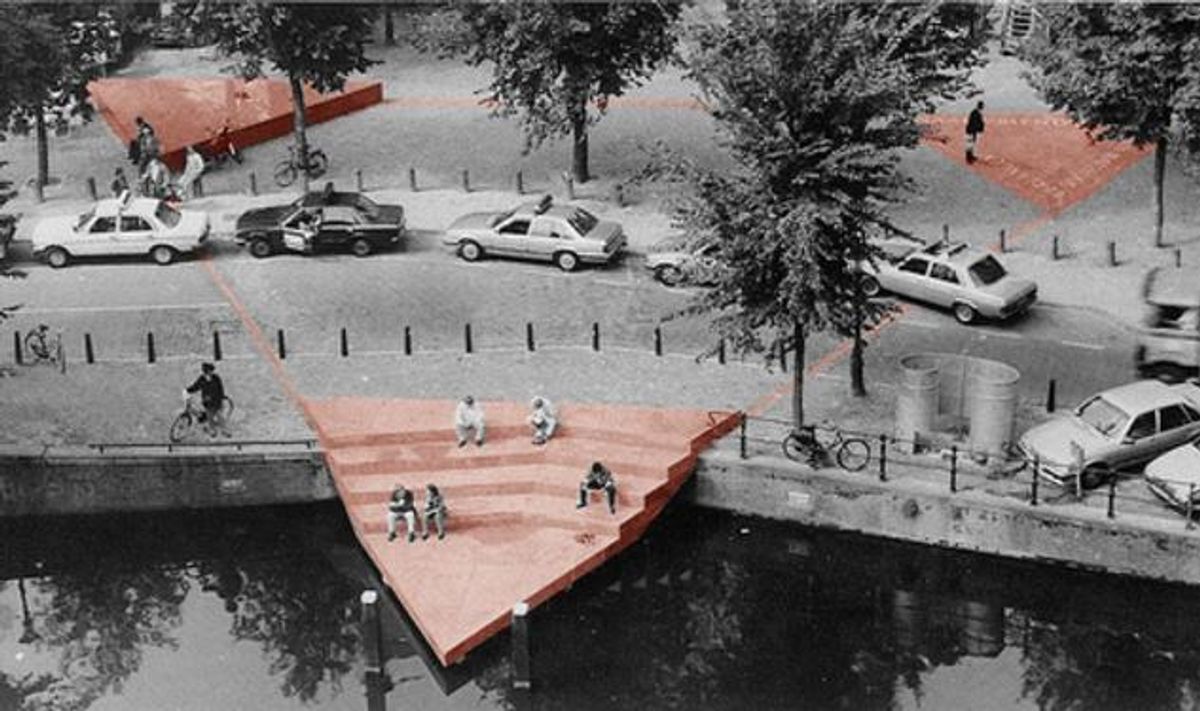Travel & Nightlife
10 Pieces Of Gay Trivia About Amsterdam

Get to know the Netherlands' capital city.
April 08 2013 4:10 PM EST
May 26 2023 2:00 PM EST
By continuing to use our site, you agree to our Private Policy and Terms of Use.

An estimated 3,000 activists in and around Amsterdam flew their rainbow flags at half mast to protest Russian President Vladimir Putin's visit and proposed laws that would essentially ban gay pride and make it illegal to disseminate "gay propaganda" to minors in Russia. This protest is just one of many, many examples of why the Netherlands and its capital city remain a favorite for gay travelers.
For those heading over to Amsterdam or those who have been and need a friendly refresher or for those who just want some great trivia to impress your next date, here are ten mostly fun gay facts about Amsterdam.
1. HOMOMONUMENT: Did you know Amsterdam's home to the first ever monument dedicated to persecuted gays and lesbians. It's true! A set of three pink triangles of varying heights form a larger triangle, one point of which extends over the Keizersgracht canal and has become a favorite locale for locals and tourists looking to pass warmer summer days. Another point, bearing a quote from gay poet Jacob Israel de Haan, "Such an endless desire for friendship," points toward the house where Anne Frank hid from the Nazis.
2. PAAR: Denmark may have been the first nation to recognize same-sex domestic partnerships, but it was the Netherlands that held the first same-sex marriages: in 2001 former Amsterdam Mayor Job Cohen officiated four same-sex couples vows, the first of an estimated 2,500 such weddings conducted that year alone.
3. MERCI!: The introduction of France's Napoleonic Law in 1811 made the recently passed 1790 anti-sodomy laws null-and-void. No new laws cropped up after the Netherlands' independence after 1813, though there were still other legal nuisances, like disparities in age of consent laws and police raids during the 19th and early 20th Century. Hundreds of men were prosecuted for verkeerde liefhebbers, or "wrong love." It was relatively progressive, but not perfect.
4. A CASE OF URANISM: As raids waned, medical opinion began to shift to a more compassionate view, especially as Amsterdam-based physicians like Lucien von Romer began arguing gays and lesbians were born this way. Novelists like de Haan and Louis Couperus were addressing same-sex love and so too was doctor and writer Arnold Aletrino, who called homosexuality "Uranism," which, via the German Uranismus, comes from the Greek ouranios, or "heavenly."
5. AMSTEL LIGHTS: Amstel is more than a famous Amsterdam river that inspired an even more famous beer's name. It's also the name of a famously gay friendly street in Amsterdam. It was at number 14 that one of the city's first gay bars, Du Merlo, opened its doors in 1929. (Other gay bars existed before, starting as early as 1911, but were often shut down by police.) Similar establishments soon followed on Amstel street, including Amstel Taveerne, which is now known as Amstel Fifty Four and remains one of the city's most popular gay gathering spots.
6. TABU: While we're on the subject of watering holes, Tabu was the first lesbian bar in Amsterdam. It opened in 1970, two years before the left-wing group "Purple September" formed to fight for lesbian rights.
7. OLD BEAR: Open since 1948, the Golden Bear Hotel portends to be Amsterdam's first gay-specific hotel, and operates 24 rooms in a building first erected in 1737, around the same time pre-Napoleonic sodomy persecutions were reaching their peak.
8. "LEVENSRECHT": First published in Amsterdam 1940 and shutdown during the war, Levenrecht ("The Right to Live") was the Netherland's first gay magazine. It revived itself in 1946, after the war, and was published by the still-kicking gay rights organization the COC until 1948, when it was renamed Friendship, which ran until 1964.
9. WATER SPORTS: Believe it or not, Amsterdam didn't have its own gay pride parade until 1996. But it sure made up for that gap with gusto: their parade moves the action from the pride to the city's labyrinthine canals, spreading LGBT love throughout the city.
10. HERKEN DE HOMO: Fox's American reality show Playing It Straight, about a woman who must pick out the straight lads from a mixed herd, was so popular in The Netherlands that the network RTL Netherlands created its own version, Herken De Homo, which translates to "Find the Gay One." A pretty straight forward name, no?
Beware of the Straightors: 'The Traitors' bros vs. the women and gays